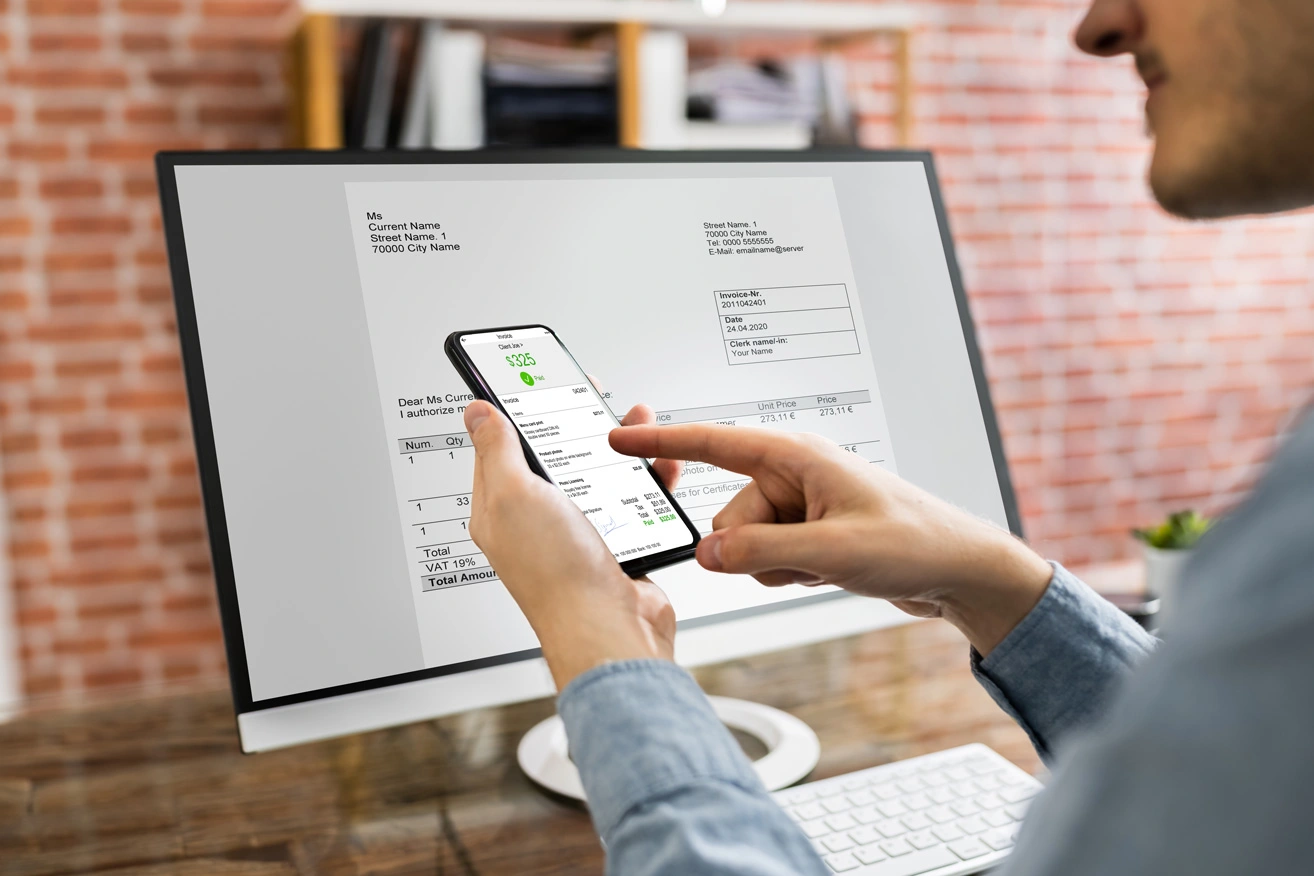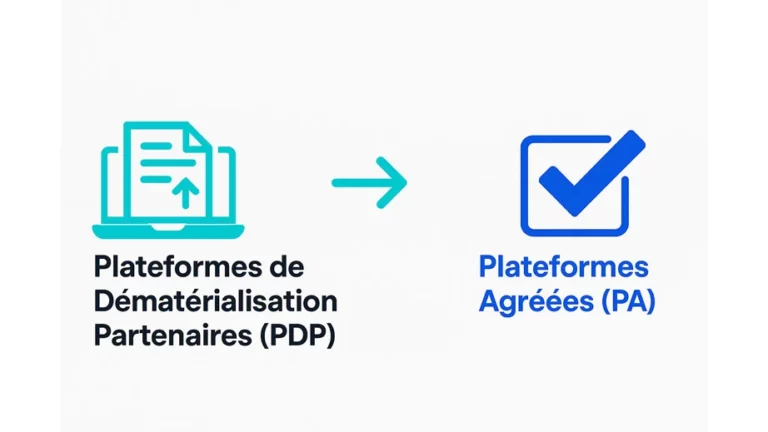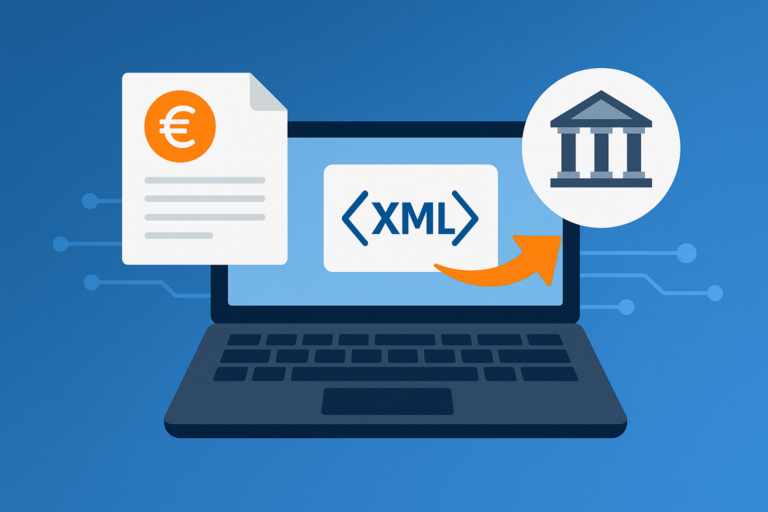Introduction to the importance of collecting supplier invoices
Collecting supplier invoices is a key step in ensuring efficient financial management. By ensuring that all transactions are correctly recorded, it facilitates bookkeeping, cash flow monitoring and compliance with accounting obligations.
Rigorous invoice management also helps to meet payment deadlines, avoid late payment penalties and strengthen relations with suppliers.
Given the increasing volume of documents and the imminent introduction of compulsory electronic invoicing, automating this process is becoming a real lever.
productivity. This reduces human error, saves valuable time and allows finance teams to refocus on higher value-added tasks such as analysis and strategic planning. In short,automating the collection of supplier invoices contributes directly to the company’s overall performance and compliance.
Why automate the collection of supplier invoices?
Manual management of supplier invoices is often time-consuming and a source of errors.
Teams spend a considerable amount of time retrieving documents from multiple sources: emails, supplier portals, paper mail, etc. This fragmented process increases the risk of duplicates, oversights and processing delays.
Automating the collection of invoices means that the entire document flow can be centralised and made more reliable . By eliminating repetitive tasks and reducing the risk of errors, financial teams can concentrate on higher added-value tasks.
Another major advantage is that automation facilitates regulatory compliance. Withelectronic invoicing soon to be compulsory in France, an automated process is essential to guarantee traceability, legal archiving and data accuracy.
To sum up, automating the collection of supplier invoices enables you to :
- significant time savings,
- fewer errors and better visibility of expenditure,
- optimum preparation for regulatory changes
How does an automation system work?
An automation system is based on software capable of carrying out repetitive tasks autonomously. When it comes to collecting supplier invoices , this usually involves integrating dematerialisation or accounting management software with the channels for receiving invoices: mailboxes, supplier portals or specialised platforms.
Once set up, the system automatically extracts key invoice data (supplier, date, amount, VAT, invoice number, etc.) and organises it in the company’s accounting software or information system. This considerably reduces human error and saves time.
Optical character recognition(OCR) technologies, combined with artificial intelligence engines, make it possible to read and interpret information from both paper invoices and digital documents (PDFs, scans).
Customisable processing rules can be applied to automate the classification, analytical allocation and tracking of each invoice, according to the company’s specific needs. This makes the whole process more reliable, faster and compliant with legal requirements.
How do I set up automation with Azopio?
Setting up anautomated invoice collection systemwith Azopio is quick and easy. The platform enables you to connect your company’s main invoice sources and bank accounts in just a few clicks.
Once the channels have been configured, Azopio automatically retrieves incoming invoices, extracts the essential data using a powerful OCR engine enhanced byartificial intelligence, and then centralises all the documents and information in your secure personal space on the Azopio platform. You can then manage, check and export this data to your accounting software or your chartered accountant, as required.
Processing rules can be set up intuitively and customised: validation circuits and accounting categories can be defined, and secure document archiving can be automated.
Thanks to this automated system, teams save precious time and can be sure that their accounting is always up to date and compliant with legal requirements – including those relating to the future mandatory electronic invoicing.
Best practices for secure and successful automation
To take full advantage of automated supplier invoice collection, it is essential to follow a few best practices.
Guaranteeing data security and confidentiality
Invoices contain sensitive information (supplier identity, amounts, account numbers, etc.). It is therefore essential to choose a platform that
complying with current security standards (data encryption, secure hosting, RGPD compliance).
With Azopio, all documents are stored on secure servers in Europe, guaranteeing confidentiality and data protection.
Maintain regular monitoring of the process
Even if automation reduces the daily workload, it is still important to regularly check that the system is working properly and that the data collected is of high quality. Azopio provides clear dashboards for controlling activity and monitoring invoice flows in real time.
Preparing for mandatory electronic invoicing
The transition to electronic invoicing, which will become compulsory from 2026, means that businesses need to structure their invoice handling processes and make them more reliable. By implementing automation now, you can prepare smoothly for this transition, while optimising day-to-day management.
FAQ
What types of invoices can be automated with Azopio?
Azopio enables you to centralise and automatically process most supplier invoices, whether they are received by email (as PDF attachments), downloaded from a website or sent by post.
from a supplier portal, or generated via an online customer area. Paper documents (invoices, till receipts, expense receipts) can also be integrated using OCR technology, either by scanning them in using a scanner, or directly using the Azopio Snap mobile application, which enables these documents to be quickly captured and sent to the platform. In this way, all document flows (invoices, expense receipts, accounting vouchers) are centralised and made reliable in your personal Azopio space.
Is it suitable for SMEs, schools and associations?
Yes, the solution is designed to meet the needs of a wide range of organisations: SMEs, VSEs, associations, schools and accountancy firms.
The platform is easy to deploy and adapts to each organisation’s processes.
How long does it take to implement automation?
Azopio is quick to install and set up. In general, the initial configuration of collection channels only takes a few minutes. Getting started is
for users, thanks to a simple, intuitive interface. What’s more, the Azopio team is on hand to support you throughout the implementation process and answer any questions you may have.
Is this compatible with mandatory electronic invoicing?
Yes, Azopio enables you to anticipate the transition to compulsory electronic invoicing planned in France. The platform complies with legal requirements and adapts to future standardised formats, to ensure that invoice processing is compliant.
#automatic invoice collection, #supplier invoice collection, #invoice collection




